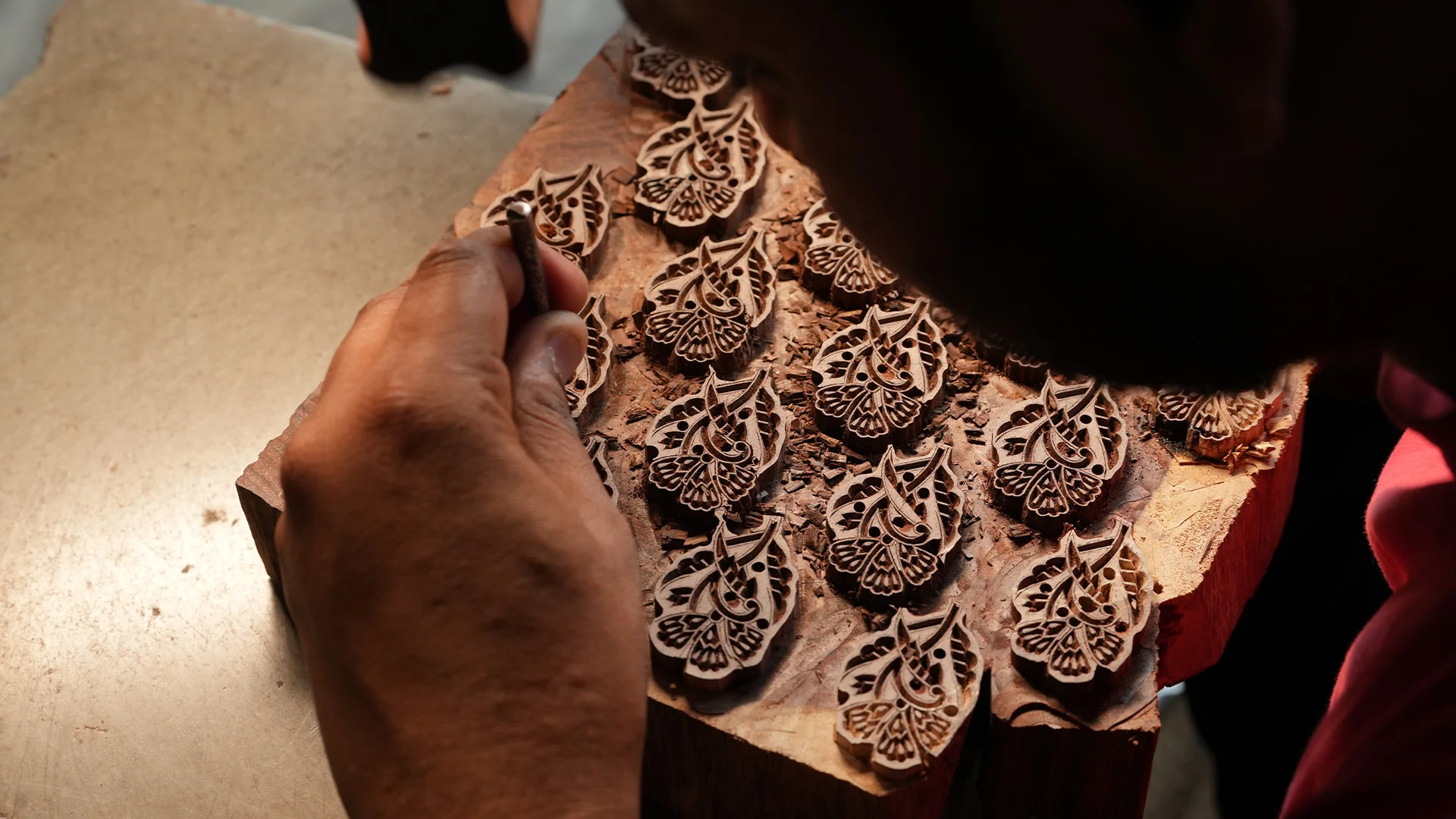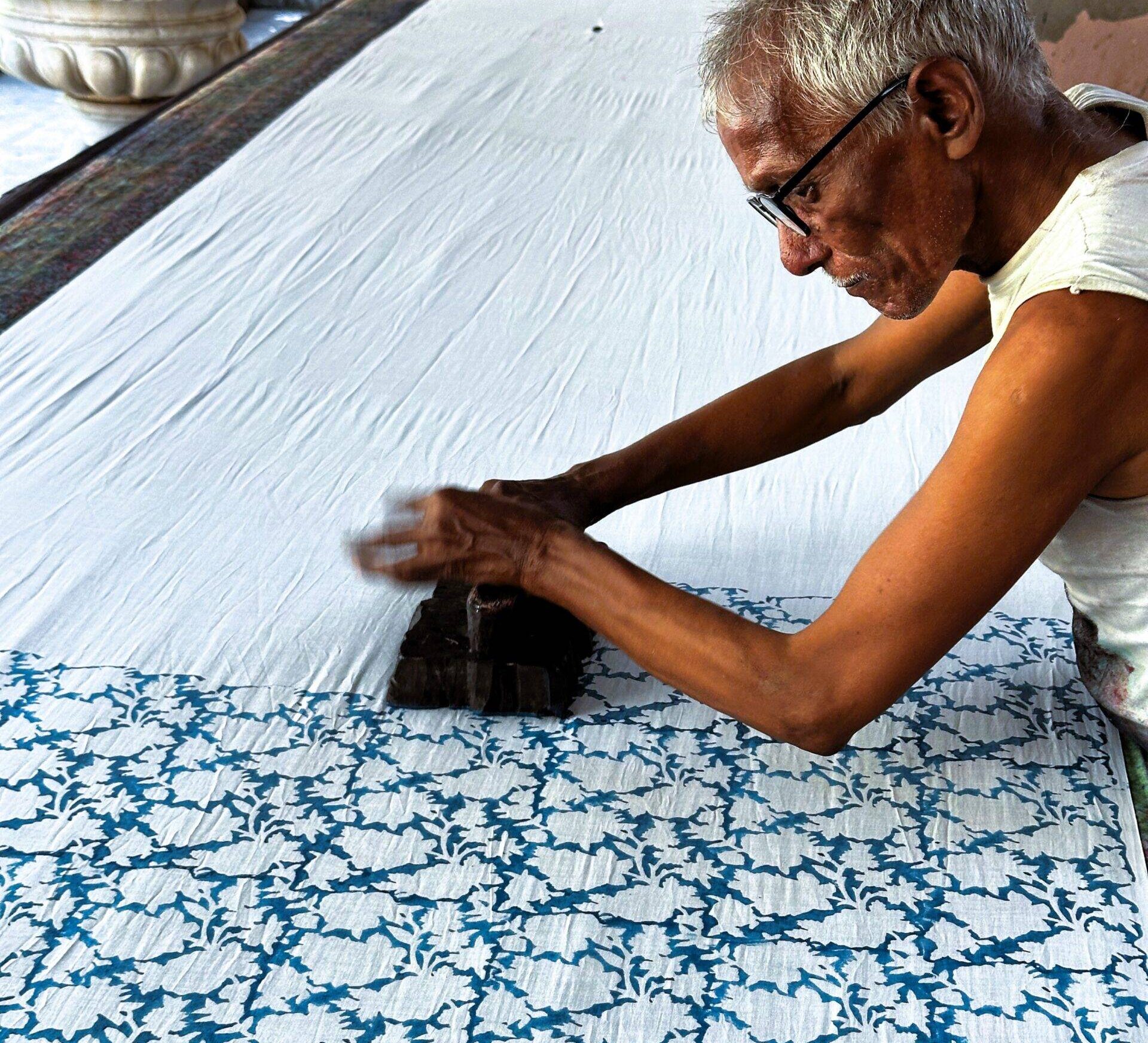Introduction to Rajasthan’s Block Making
Brief Overview of Block Making and Its Significance in Rajasthan
Block making, an ancient art form, holds a special place in the cultural and artistic heritage of Rajasthan. This traditional craft involves the intricate process of carving designs onto wooden blocks, which are then used to print patterns on fabrics and other materials. Renowned for its detailed craftsmanship and vibrant patterns, block making is not just an artistic endeavor but a significant aspect of Rajasthan’s cultural identity.
Historical Origins and Cultural Significance
The History of Block Making in Rajasthan
The origins of block making in Rajasthan can be traced back to centuries-old traditions. Historical records suggest that this craft was brought to India by the Mughal emperors, who were great patrons of the arts. Over time, local artisans in Rajasthan adopted and refined these techniques, creating unique styles that are now synonymous with the region.
Importance in Rajasthan Culture and Traditions
Block making is deeply embedded in the cultural fabric of Rajasthan. It is not merely a craft but a form of storytelling, where each design reflects the rich history, folklore, and traditions of the region. The craft is prominently featured in festivals, traditional attire, and home decor, making it an integral part of everyday life in Rajasthan.
The Art of Creation: Techniques and Materials
Detailed Explanation of the Traditional Techniques Used
Traditional block making involves several meticulous steps:
- Designing: The process starts with creating a design, which is often inspired by nature, mythology, or geometric patterns.
- Carving: Skilled artisans carve the design onto wooden blocks, typically made from teak or sheesham wood.
- Printing: The carved blocks are then dipped in natural dyes and pressed onto fabrics to transfer the design.
Types of Materials Involved in the Process
The primary materials used in block making include:
- Wood: For carving the blocks.
- Natural Dyes: Extracted from plants, minerals, and other natural sources.
- Fabrics: Cotton, silk, and linen are commonly used for printing.
Designs and Patterns: A Reflection of Rajasthan Aesthetics
Common Motifs and Patterns Found in Rajasthan Block Making
Rajasthan block making is known for its diverse motifs and patterns, including:
- Floral Designs: Lotus, marigold, and other flowers.
- Geometric Patterns: Stripes, chevrons, and lattice work.
- Animal Motifs: Elephants, camels, and peacocks, which are symbolic of Rajasthan’s wildlife.
Symbolic Meanings Behind the Designs
Each motif in Rajasthan block making carries a symbolic meaning:
- Lotus: Represents purity and beauty.
- Elephant: Symbolizes strength and wisdom.
- Peacock: Associated with grace and royalty.
Notable Artisans and Workshops
Profiles of Renowned Artisans
Rajasthan is home to many master artisans who have dedicated their lives to preserving this craft. Notable names include:
- Raju Chhipa: Known for his innovative designs and use of natural dyes.
- Sundarlal Meena: Renowned for his intricate carving skills.
Overview of Famous Workshops and Their Contributions
Prominent workshops like Anokhi and Bagru Prints have played a crucial role in reviving and promoting block making. These workshops not only produce exquisite pieces but also offer training programs to ensure the craft’s continuity.
Applications and Varieties of Block Making Products
Different Products Made from Block Making
The versatility of block making is reflected in the wide range of products it produces, such as:
- Textiles: Sarees, scarves, and bedspreads.
- Home Decor: Cushion covers, curtains, and table runners.
- Accessories: Bags, shoes, and jewelry boxes.
Innovative Uses and Contemporary Adaptations
Modern artisans and designers are finding new ways to incorporate block making into contemporary fashion and decor, creating unique fusion pieces that appeal to a global audience.
Economic Impact and Sustainability
The Role of Block Making in the Local Economy
Block making is a significant source of livelihood for many families in Rajasthan. It supports local economies by providing employment opportunities and contributing to the tourism industry.
Sustainable Practices in the Craft
Sustainability is a key focus in traditional block making. Artisans use eco-friendly materials like natural dyes and sustainably sourced wood, ensuring that the craft remains environmentally responsible.
Preservation and Modern Challenges
Efforts to Preserve the Traditional Craft
Numerous initiatives are underway to preserve this ancient art form. Government programs, NGO projects, and private enterprises are all working to document traditional techniques, provide training, and promote block making on global platforms.
Challenges Faced by Artisans Today
Despite these efforts, artisans face several challenges, including:
- Competition from Mass Production: The rise of machine-made textiles.
- Economic Pressures: Low wages and limited market access.
- Cultural Shifts: Changing tastes and the decline of traditional practices.
How to Identify Authentic Rajasthan Block Making
Tips for Distinguishing Genuine Pieces from Imitations
To identify authentic Rajasthan block making:
- Examine the Craftsmanship: Look for intricate designs and precise printing.
- Check the Materials: Authentic pieces use natural dyes and high-quality fabrics.
- Understand the Patterns: Familiarize yourself with traditional motifs and their meanings.
What to Look for in Quality Craftsmanship
High-quality block making is characterized by:
- Consistent Patterns: Even and clear prints.
- Durable Materials: Long-lasting wood and fabric.
- Artisan’s Signature: Many artisans leave a small mark or signature on their work.
Experiencing Block Making Craft in Rajasthan
Places to Visit for a Hands-on Experience
To immerse yourself in the world of block making, visit:
- Jaipur: Home to many workshops and markets.
- Bagru: Famous for its traditional block printing community.
Recommendations for Tours and Workshops
Several organizations offer tours and workshops, including:
- Anokhi Museum of Hand Printing: Offers guided tours and printing workshops.
- Craft Village Jaipur: Provides hands-on experiences and training sessions.
DIY: Trying Your Hand at Block Making
Simple DIY Project Ideas for Readers to Try at Home
For those inspired to try block making at home, consider these simple projects:
- DIY Printed Scarf: Create your own designs on a plain scarf.
- Block Printed Tote Bag: Customize a canvas tote with unique patterns.
Basic Steps and Tips for Beginners
- Choose Your Design: Start with a simple motif.
- Carve the Block: Use soft wood or linoleum for ease.
- Prepare the Fabric: Wash and dry before printing.
- Apply the Dye: Use fabric paints or natural dyes.
- Print the Fabric: Press the block firmly and evenly.
Conclusion: The Enduring Legacy of Rajasthan Block Making
Summary of the Craft’s Significance
Rajasthan block making is a testament to the region’s rich artistic heritage. This enduring craft continues to captivate people with its beauty and intricacy, preserving a piece of history in every print.
Final Thoughts on Its Cultural Heritage and Future
As we look to the future, the fusion of tradition and innovation will ensure that block making remains a vibrant and integral part of Rajasthan’s cultural tapestry. By supporting artisans and appreciating their work, we contribute to the preservation of this timeless craft.
Customer FAQs
- What is block making? Block making is a traditional craft involving the carving of designs onto wooden blocks, which are then used to print patterns on fabrics.
- Where can I buy authentic Rajasthan block prints? Authentic block prints can be found in local markets in Rajasthan, as well as from reputable online stores and workshops like Anokhi.
- How can I tell if a block print is authentic? Look for detailed craftsmanship, natural dyes, and traditional motifs. Authentic pieces often come with information about the artisan and production process.
- What types of products are made using block printing? Block printing is used to create a variety of products, including textiles, home decor items, and accessories.
- Can I learn block making in Rajasthan? Yes, many workshops and organizations offer courses and hands-on experiences for visitors.
- What materials are used in block making? Common materials include wood for the blocks, natural dyes, and fabrics such as cotton and silk.
- How long does it take to create a block print? The time varies depending on the complexity of the design and the number of colors used. It can range from a few hours to several days.
- Are there any sustainable practices in block making? Yes, many artisans use eco-friendly materials and methods, such as natural dyes and sustainably sourced wood.
- What challenges do block makers face today? Challenges include competition from mass-produced goods, economic pressures, and the need to adapt to changing market demands.
- Why is block making important to Rajasthan’s culture? Block making is a key aspect of Rajasthan’s artistic heritage, reflecting the region’s history, traditions, and aesthetic sensibilities.


